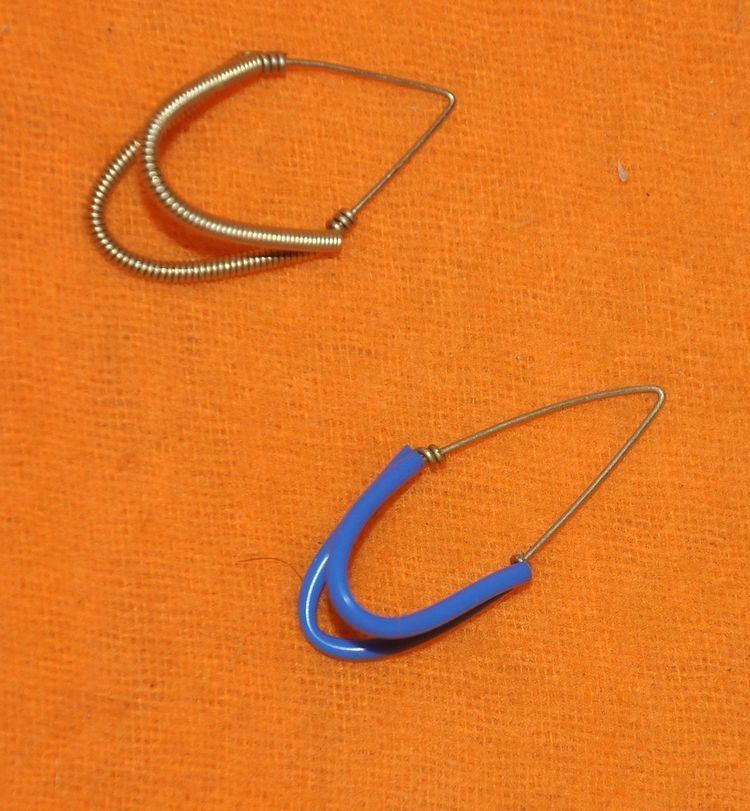 | ||
A mezrāb or zakhmeh (Arabic: مضراب,Persian: مضراب, also spelled mizrab) or (Persian: زخمه, also spelled as zakhma) is a plectrum which is used for several Iranian and Indian string instruments.
For sitar, a mezrab is worn on the finger of a sitar player. It is a plectrum made by hand from a continuous strand of iron used to strike the strings of the sitar. Although it is generally worn on the index finger, a second mezrab is sometimes worn on the middle or little finger. The mezrab fits tightly on the end of the finger so that it does not move while playing, intended to be projected roughly 1/4 inch from the end of the finger.
Mezrab is also the name for the lightweight wooden hammer used to play the Persian santur.
Different strokes used
There are four different Bols (strokes) used when playing sitar: Da, Ra, Dir and Dra.
